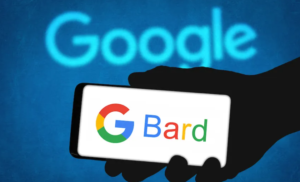Google Bard a Must-Have Tool for Your Company’s Success, learn why in our informative article now!”
In today’s fast-paced business landscape, companies are constantly looking for innovative ways to improve their operations and gain a competitive edge. One area where AI technology has shown particular promise is in the field of language models, which can be used to analyze data, generate creative writing, and improve communication strategies. One such model that has gained widespread attention is Google Bard, an AI language model developed by Google.
What is Google Bard

Google Bard is an artificial intelligence (AI) language model developed by Google that uses deep learning techniques to generate text. Its purpose is to generate creative writing in a variety of styles, including poetry, prose, and other types of literary content. The model is based on a transformer architecture and is trained on a large corpus of text data to generate human-like responses.
The name “Bard” is a reference to the ancient tradition of poets and storytellers who were known for their ability to use language to inspire and entertain. Google Bard is designed to continue this tradition by generating text that is creative, expressive, and tailored to a specific audience or context.
Google Bard can be accessed through a simple web interface, where users can enter a starting phrase or topic and receive a generated response. The model can generate poems in a variety of styles, including sonnets, haikus, and free verse, as well as other types of creative writing such as short stories and song lyrics.
Beyond its creative applications, Google Bard has a wide range of potential uses in various industries, including marketing, customer service, and content creation. Its ability to generate text that is tailored to specific audiences and contexts makes it a valuable tool for companies looking to communicate effectively with customers and partners around the world.
In summary, Google Bard is an AI language model that has the ability to generate creative writing in a variety of styles and formats. Its purpose is to inspire and assist with content creation, as well as to improve communication and data analysis strategies. Its potential applications are vast, and it represents a significant advancement in the field of natural language processing.
Advantages of Using Google Bard in a Company
Google Bard, an AI language model that generates poetry and other text, can be a valuable tool for companies in various ways. Here are some possible ways that companies can benefit from the use of Google Bard:
1. Content creation: Companies can use Google Bard to generate high-quality and engaging content for their websites, social media, and other marketing channels. By using AI-generated text that is tailored to their brand and audience, companies can save time and resources while still maintaining a consistent and compelling voice.
2. Customer engagement: Companies can use Google Bard to create personalized messages and responses for customer inquiries and support. By using AI-generated text that is tailored to the customer’s needs and preferences, companies can improve customer satisfaction and loyalty.
3. Creative brainstorming: Companies can use Google Bard to generate fresh and innovative ideas for new products, services, and marketing campaigns. By using AI-generated text that explores new themes and styles, companies can break out of their usual patterns of thinking and come up with truly original ideas.
4. Language translation: Companies can use Google Bard to translate text into different languages, allowing them to expand their global reach and communicate with customers and partners in different regions of the world.
5. Research and development: Companies can use Google Bard to analyze large amounts of data and generate insights that can inform their research and development efforts. By using AI-generated text that identifies patterns and trends, companies can make more informed decisions about product development, market trends, and other key areas.
Overall, the use of Google Bard and other AI language models can be a valuable tool for companies looking to improve their content creation, customer engagement, and innovation efforts. While there are certainly concerns about the potential devaluation of human creativity, it is also possible that these technologies could open up new avenues for exploration and creativity. As with any new technology, it will be important for companies to approach it with both skepticism and an open mind, and to carefully consider the ethical implications of its use and development.




